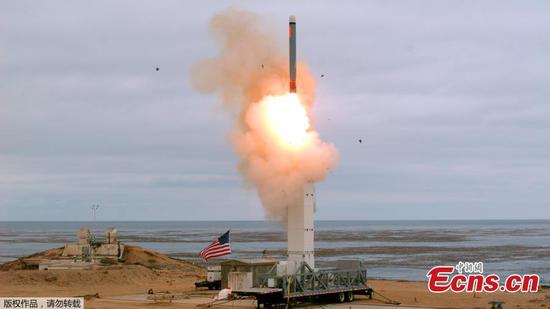China's new type of communication satellite, ChinaSat 18, has encountered malfunctions since it was placed in space on Monday night, according to Xinhua News Agency.
Xinhua reported on Tuesday afternoon that the launch and rocket-satellite separation were normal, but the satellite later failed to work. Researchers have been investigating possible causes, it said.
The report did not mention whether ChinaSat 18 has reached its preset orbit or whether it can be recovered.
The satellite, the first developed on the country's DFH-4E communication satellite platform, lifted off at 8:03 pm on Monday atop a Long March 3B carrier rocket at the Xichang Satellite Launch Center in Sichuan province. It is tasked with improving the telecommunication and broadcasting services for China and its neighbors in southwestern Asia, according to a statement from China Aerospace Science and Technology Corp, the nation's major space contractor.
After in-orbit tests, it will be delivered to China Satellite Communications and is expected to work in a geostationary orbit for 15 years.
The China Academy of Space Technology began development of ChinaSat 18 in 2013. The satellite has a total of 41 Ku-band and Ka-band transponders designed and made by Thales Alenia Space, a Franco-Italian aerospace manufacturer.
Compared with its predecessors, the new satellite features optimized designs, expanded structure and enlarged capacity and promises a 30 percent increase in overall capability over the DFH-4 series, the current pillar of China's communication satellite fleet, according to Shi Ming, chief designer of the DFH-4E communication satellite platform.
China has been striving to design and build world-class, high-performance communication satellites in the past several years to satiate the rapidly rising demand for telecommunication, broadcasting and internet services.
In January 2018, the ChinaSat 16 - the nation's first high-capacity communication satellite, which was launched by a Long March 3B rocket at the Xichang center in April 2017 - conducted the world's first experiment on high-orbit laser communication, a technology crucial to enabling a spacecraft to send, receive and transmit a large quantity of data with ground stations.
Chinese researchers have also developed DFH-5, the next-generation communication satellite platform, and are waiting for the next Long March 5 heavy-lift rocket mission to send the first such satellite into space, according to Chinese space authorities.


















































